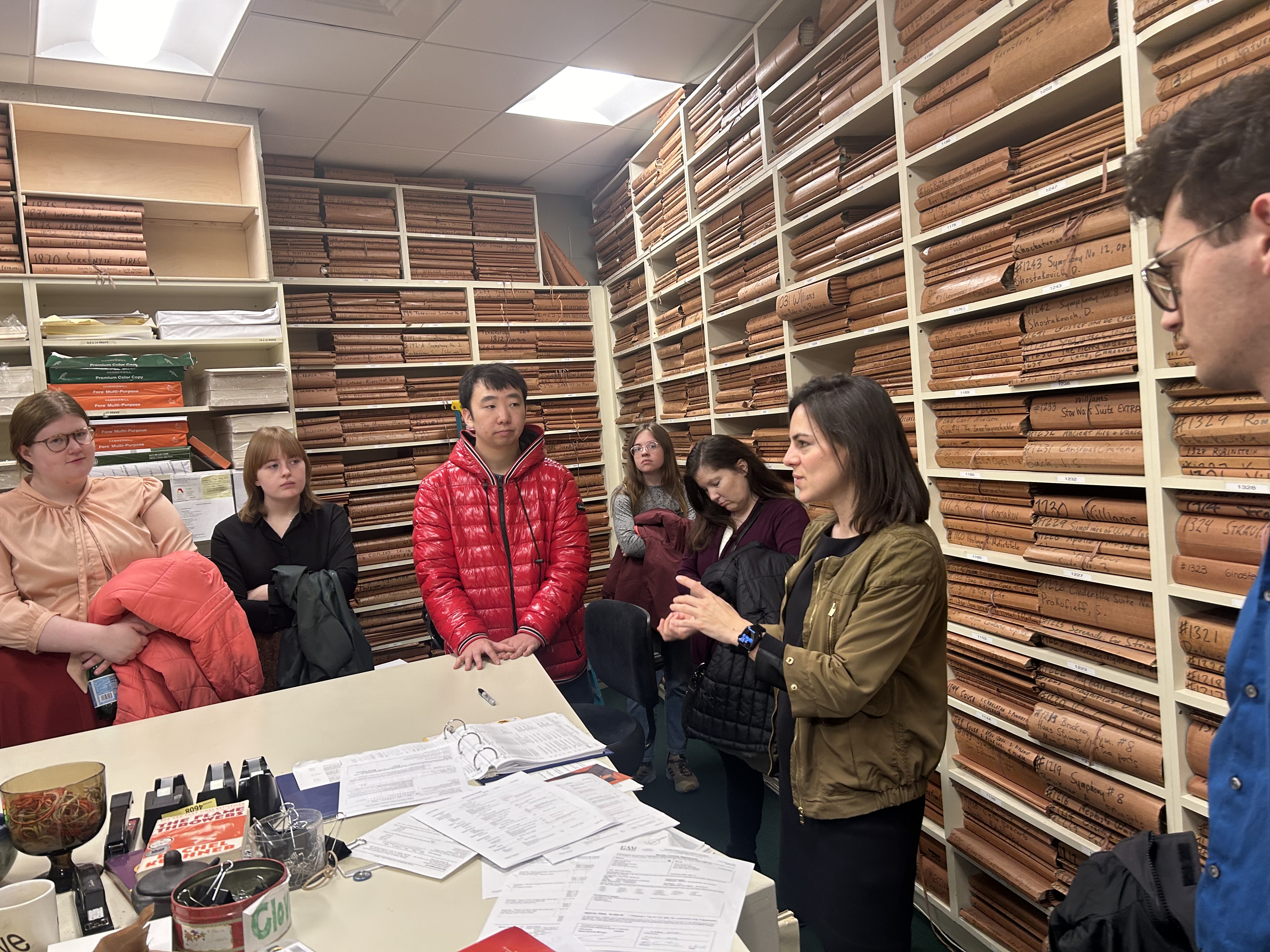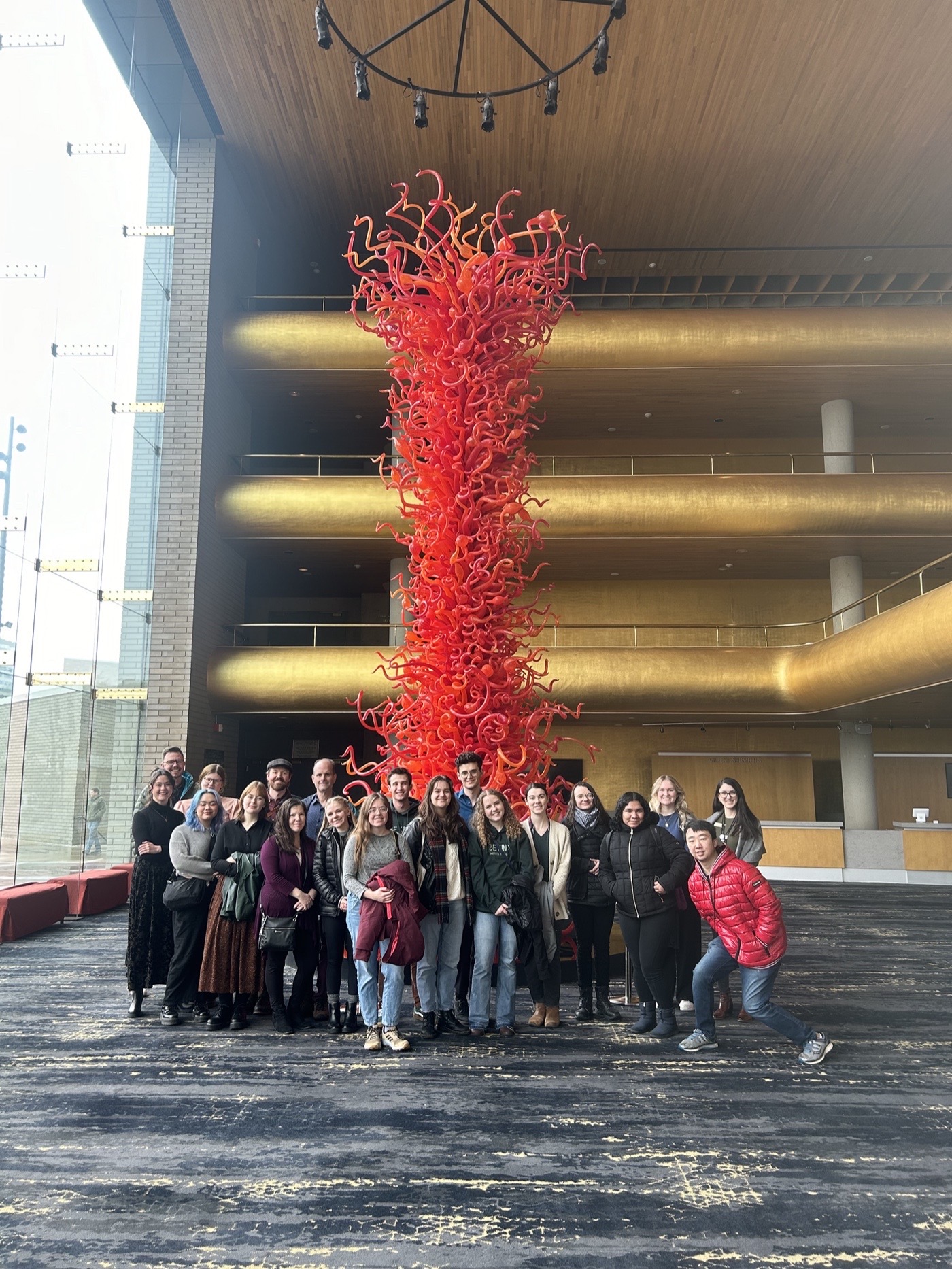By Brenda Payan Medina
On Friday, February 9th, College of Fine Arts students and the ArtsForce team had the opportunity to visit Abravanel Hall, the Utah Symphony’s home base! As continuing students in the College of Fine Arts, visiting Abravanel Hall and networking with various professionals gave students an inside look as to the array of careers available within the music industry.
Abravanel Hall is located in the heart of Salt Lake City, adjacent to Temple Square. The Trek began in Abravanel Hall’s stunning gold leaf-lined lobby where students were greeted by an intricate blown glass art piece made by Seattle artist Dale Chihuly. Valued at hundreds of thousands of dollars, Chihuly’s stunning structure was only an introduction to the wealth of artistry, knowledge, and information that would be shared by arts administrators, artists, and performers of the Utah Symphony.
We were first met by Symphony Education Manager, Dr. Jessica Wiley. After providing us with a rich history of the origins of Abravanel Hall and the Utah Symphony, Jessica led students to the performance hall, where students had the opportunity to be on stage, right next to the perfectly positioned seats of the symphony performers. Jessica explained to students the exactness with which the performance hall, and more generally Abravanel Hall, was constructed. In the performance hall, there are no right angles; right angles catch the sound when orchestra performers play on stage. In addition, in no part of the balconies or wall construction are there nails involved, as nails carry their own vibration and affect the way the music sounds throughout the hall. After gazing at the gold leaf-covered walls, boho crystal chandeliers, and all 2,768 plush green seats, students were led to Abravanel Hall’s music library.
 In the music library, students were greeted by performer and librarian Claudia Restrepo. Claudia explained that performances at Abravanel Hall are planned far in advance as a result of the music renting and buying process taking a significant amount of time, and as a result of needing to provide performers the time to practice. Claudia emphasized that each performance is precisely and carefully orchestrated so that performances go as smoothly as possible.
In the music library, students were greeted by performer and librarian Claudia Restrepo. Claudia explained that performances at Abravanel Hall are planned far in advance as a result of the music renting and buying process taking a significant amount of time, and as a result of needing to provide performers the time to practice. Claudia emphasized that each performance is precisely and carefully orchestrated so that performances go as smoothly as possible.
After exploring the performance hall, music library, and a brief stop at Abravanel Hall’s green room, which is a resting area for orchestra performers, students were ready to learn from more individuals directly involved in the Utah Symphony’s amazing performances.
Jen Shark, Operations Manager at the Utah Symphony, shared with students her personal experience as a performer learning about careers in arts administration: “I was also told [that when] you get into an orchestra, that is what you are going for. I didn’t even know about these jobs… it was a process for me to figure out what else I was good at other than my instrument…there are other ways to be a part of the arts without being in a band or orchestra.”
We also heard from a performer, who reminded us to be open to opportunities, even if it doesn’t fit the linear path we had mapped out for ourselves: “You aren’t going to pick one job and do that thing forever… Once you are lucky enough to make money with those things, you can push away what you don’t like. I have this full time job but I still teach and gig and sub with other orchestras… it’s figuring out what you like to do and it is never black and white,” they said.
ArtsForce Takeaways:
- Be open to having new experiences within the arts, even if it is not something directly aligned with your major.
- Prioritize exploration! The arts have so many opportunities to be involved within the industry that go beyond being solely a performer or an artist.
- Holding different roles within your industry of interest helps build your skillset!
Author Brenda Payan Medina is a Materials Science & Engineering and Studio Art double major, and an Emerging Leaders Intern with ArtsForce.

